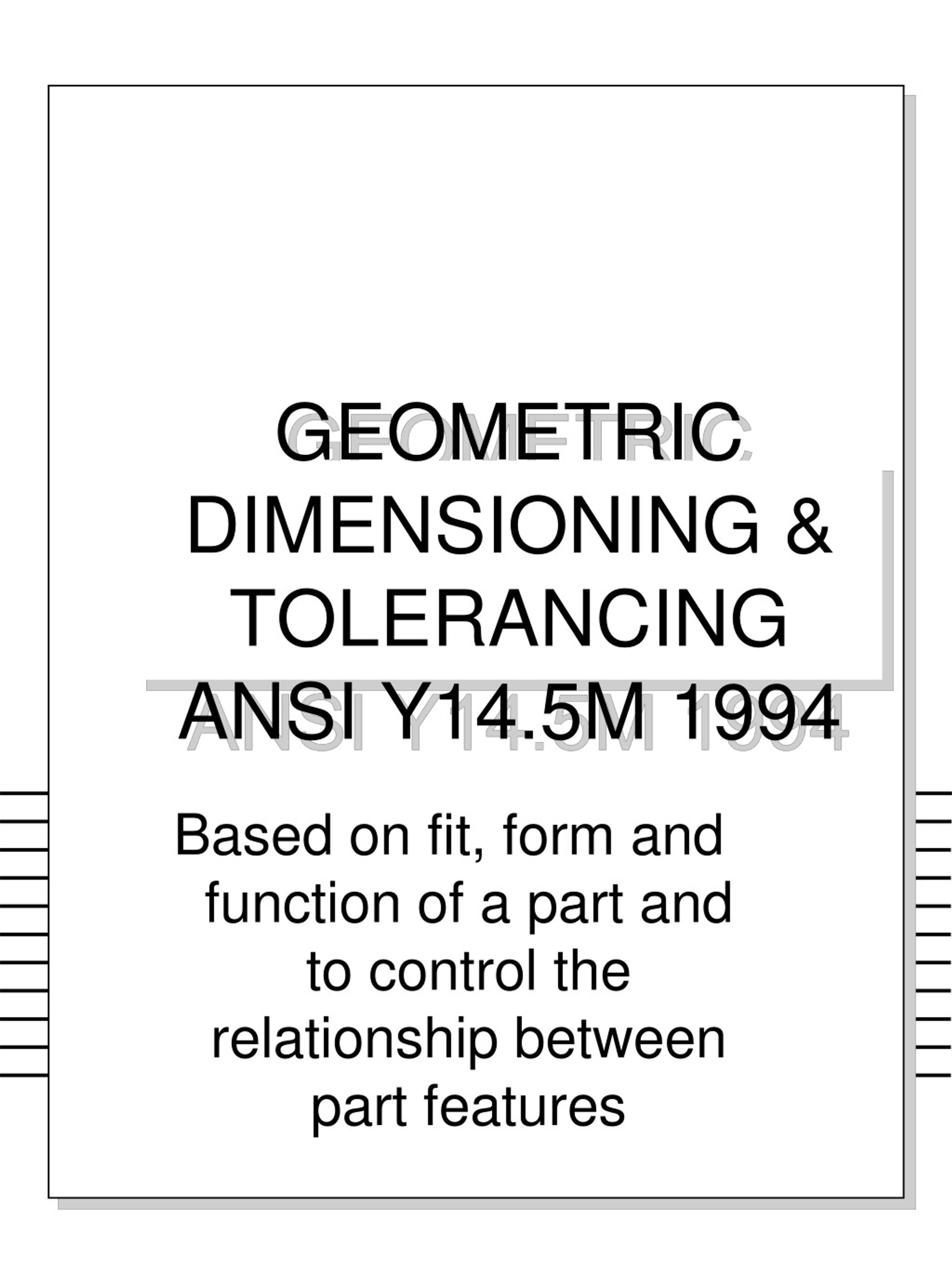
This is necessary because the idea of a point on the surface of a part is somewhat nebulous when we consider atomic-level models, and we have to make some assumptions about what the surface actually is. For the same size specification as above (10.0 ± 0.1), a pin whose least-squares size is 10.1 would conform to the specification although points on the surface could exceed the perfect boundary of diameter 10.1.Īn added fly in the ASME ointment is that the Y14.5.1-1994 standard (mathematical principles of GD&T) states that ‘all points on the surface’ refers to the points after some sort of smoothing operation. This means that some of the points might lie outside of a boundary that is defined by the size specification, while still conforming to the size specification.
#IS ASME Y14.5 A SOFTWARE ISO#
For example, if the diameter specification for a cylindrical pin is 10.0 ± 0.1, the entire pin must fit inside a theoretically perfect cylindrical shell of diameter 10.1.Īlternatively, the ISO standards consider the least squares size of a feature as the default. By extension, the ‘mating size’ concept is used to describe the size of a feature, meaning every point on the surface of a feature must fit within a boundary having the specified size. The Y14.5 standard has always considered the control of all points on the surface of a feature. The major differences between the ASME and ISO tolerancing standards have been classified in the five categories that follow. In the shorter term, the choice between ISO and ASME may be less important than adequate training for designers so that they can ‘encode’ their criteria in a drawing or model, and training for inspectors so that they can ‘decode’ the meaning of the drawing or model.

#IS ASME Y14.5 A SOFTWARE FULL#
The primary differences are in the default meaning of certain symbols (which can always be over-ridden with a symbol or note).įurthermore, I believe that more errors are made by designers not understanding the full implication of the tolerances that they specify than by designers confusing the use of ISO versus ASME tolerancing standards. While there are many such differences between the current standards, there is nothing-of which I’m aware-that would prevent a designer from being able to specify exactly what they want.

However, the same control is available using the surface profile tolerance. The single plane is not a feature of size, and so a position tolerance may not be used. In ASME Y14.5 standards, the use of the position tolerance is reserved for features of size (spheres, cylinders, and opposing pairs of planes) and some profile features. The notation shown in the figure is permitted by the ISO standards, in that the position of the surface is controlled relative to the datum feature. The location of a surface is being controlled relative to a datum feature A. A simple example, shown in Figure 1, shows an instance of how the standards differ. This article will not focus on these differences as much as the structural and organizational differences that might influence a company to choose one set of standards over the other. There are many technical differences between the ASME and ISO tolerancing standards. How can we be sure that the manufacturer of our product will have sufficient training in the ASME GD&T? If we are part of an international company, will all of our sites be using the same standards for GD&T when they develop designs or produce products? And finally, are the ASME and ISO standards really that different anyway? However, there are other standards for GD&T, specifically those produced by ISO technical committee 213 Dimensional and geometrical product specifications and verification. The Y14.5 standard enjoys a large circulation and sales worldwide, so it can truly be thought of in international terms. The current ASME standard for GD&T is ASME Y14.5-2009 this standard is developed by subcommittee 5 of the ASME standards committee Y14 Engineering Product Definition and Related Documentation Practices. As we consider the possibility that products can be manufactured anywhere in the world, we must also think about the specifics of the standard we use to describe the product requirements. One of the benefits of GD&T is that the requirements are captured in symbols, rather than notes, so a design can be manufactured to the specifications regardless of the native language at the manufacturing facility.

GD&T has been growing steadily in acceptance since its introduction in the 1950s with MILSTD8 (actually, the Ordnance Corps ORD 30-1-7 appeared in 1946, and also described dimensioning and tolerancing). By explicitly describing datum systems and zones to control the allowable variability of the part characteristics, many of the ambiguities that arise from limit tolerances on dimensions are overcome. Much has been written about the advantages of Geometric Dimensioning and Tolerancing (GD&T), and much of it is true.


 0 kommentar(er)
0 kommentar(er)
